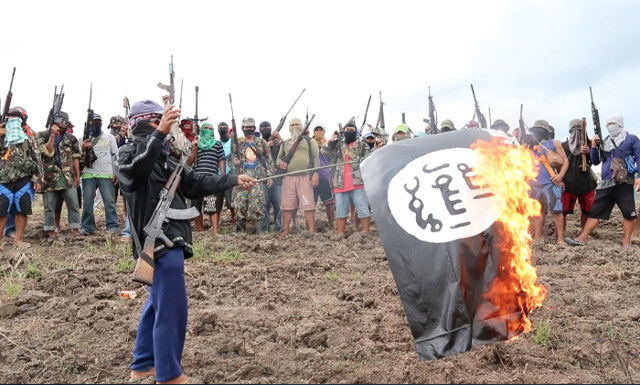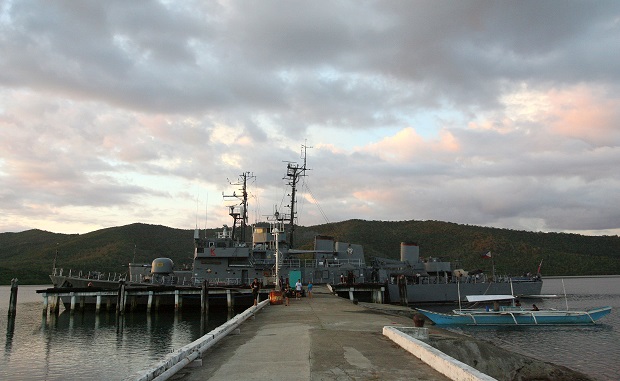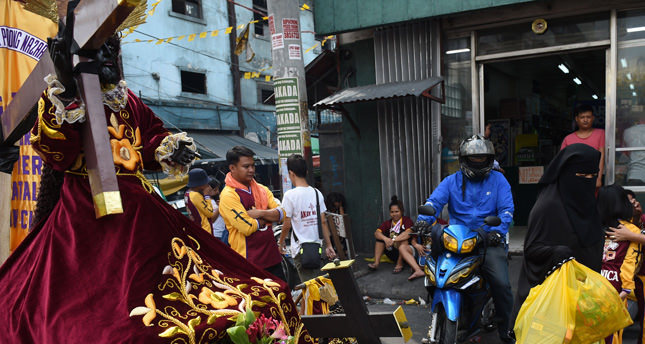From Rappler (Jan 17):
Northern Mindanao poll violence watchlist: 47 towns, 7 cities
Local governments on the list are monitored because of insurgency problems, rido or clan war, historical political rivalry, and the presence of private armed groups
The police
command of Northern Mindanao has identified 54
municipalities and cities in the region as Election Watchlist Areas (EWAs), its
spokesman said this week.
At the first
joint multi-stakeholder’s peace and security forum here on Thursday, January 14,
Police Superintendent Ronnie Francis Cariaga gave a breakdown of localities
being monitored in each of the 4 provinces for being prone to election-related
violence.
EWAs – formerly
known as election hotspots – are placed under any of the following 3 categories:
Category 1 -
there is a high possibility of politically-motivated incidents without the
involvement of terror groups
Category 2 -
there is threat from armed groups
Category 3 - has
the elements of categories 1 and 2
Cariaga clarified
that LGUs on the watchlist do not necessarily have violent incidents already.
They are, however, being monitored because of their insurgency problems, rido
or clan war, historical political rivalry, and the presence of private armed
groups which may be used by politicians to advance their agenda.
Election-related
incidents in the region have been increasing in the last 3 elections: 11 in
2007, 13 in 2010, and 17 in 2013.
For 2016, Lanao
del Norte has the highest number of EWAs, owing to family and political
rivalries among the Maranaos.
Below are the
election watchlist areas in each province:
Bukidnon
2 cities, 14 municipalities
Malaybalay
Valencia
Lantapan
Talakag
Kadingilan
Malitbog
Kibawe
Kitaotao
Pangantucan
Manolo Fortich
San Fernando
Quezon
Cabanglasan
Dangcagan
Sumilao
The New People's
Army (NPA) has presence in Bukidnon. The special forces of the Armed Forces of
the Philippines,
including the 1st Special Forces Battalion, Scout Ranger Regiment, and the
403rd Brigade of the Philippine Army have headquarters in the province.
In recent years,
rebels and government forces have clashed in Bukidnon, leading to the
displacement of indigenous people's communities or the Lumad. A number of Lumad
were killed in military operations, with government troops claiming that those
natives were members of the NPA's armed group Pulang Bagani Command.
Lanao del
Norte
1 city, 20 municipalities
Iligan City
Salvador
Baroy
Kapatagan
Sapad
Bacolod
Munai
Nunungan
Pantar
Kolambogan
Magsaysay
Maigo
Tangkal
Balo-i
Kauswagan
Tagoloan
Sultan Naga
Dimaporo
Tubod
Matungao
Linamon
Pantao Ragat
The presence of
private armed group and clan wars are common in these Maranao town.
Towns like Pantar
and Salvador
are heavily militarized to prevent the eruption of violence between clans and
even family members. Rido or clan wars commonly occur in Lanao del Norte and
Lanao del Sur.
For 2106, Imelda
Dimaporo is running for governor to replace her son Khalid Dimaporo, whose term
expires. Imelda will be facing Eleanor Dimaporo Lantud, the first cousin of
Imelda's husband Adbullah Bobby Dimaporo.
The Dimaporos
have been trying to unseat the husband and wife who have ruled Pantao Ragat
town.
Misamis
Occidental
3 cities, 6
municipalities
Ozamiz
Tangub
Oroquieta
Don Victoriano
Lopez Jaena
Calamba
Sapang Dalaga
Sinacaban
Baliangao
In Misamis
Occidental, private armed groups exist, including the criminal gang Kuratong
Baleleng, which operates in Tangub and Ozamiz cities.
Misamis
Oriental
1 city, 7
municipalities
Gingoog City
Salay
Sugbongcogon
Balingasag
Claveria
Lagonglong
Median
Jasaan
The NPA's
permit-to-campaign policy is enforced in Misamis Oriental. Although the
province was proclaimed NPA-free in 2011, the NPA recovered the territory it
lost.
In 2013, the
convoy of former Gingoog City Mayor Ruthie Guingona was ambushed by the NPA,
critically wounding the mother of Senator Teofisto Guingona III and killing her
bodyguard.
In April 2015,
former Gingoog Councilor Mark Anthony Pelaez Bagaipo was murdered. He was then
a front runner in the mayoral race.
Extortion by
NPA
Major General
Oscar Lactao, commanding general of the 4th Infantry Division of the Philippine
Army, said that the NPA, the armed group of the Communist Party of the Philippines,
violates the law when it asks candidates to pay for a Permit to Campaign before
entering their “area of influence.”
“What the NPA is
doing is pure extortion which undermines the electoral process and our
democracy,” he said. “If a candidate would pay the NPA, where would he get the
money? He would resort to corruption, stealing money from the people.”
Lactao also
cautioned candidates that the money they pay for permits to win will be used by
the communist guerillas to buy arms and bullets, which would be use to kill
soldiers and police officers and voters.
“We should
condemn this activities,” Lactao said.
Discerning
voters
Cagayan de Oro
City Archbishop Antonio Ledesma called on candidates to observe the diocese’s
campaign for Clean, Honest, Accurate, Meaningful, and Peaceful Election
(CHAMP).
Ledesma said that
they are identifying areas in Cagayan de Oro and Misamis Oriental for the CHAMP
campaign.
“We would really
like to present to our voters why they should really look at the track record,
qualifications, and platforms of candidates. It is not an easy job, they should
listen...and study the backgrounds of the candidates,” Ledesma said.
Ledesma also
appealed to the candidates to focus on the problems of the people. “They
should...focus on what Pope Francis talked about: mercy for the people, to
deliver public service and [serve] the common good.”
http://www.rappler.com/nation/politics/elections/2016/119097-northern-mindanao-election-violence-watchlist





